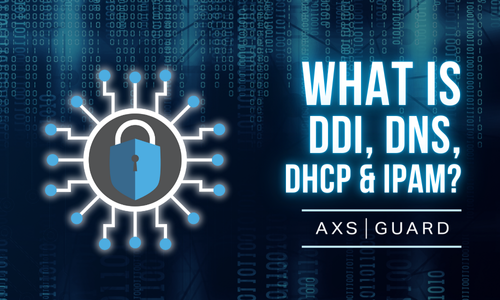

What is DNS?
The Domain Name System, or DNS, serves as the address system for the Internet. Think of it as a giant phone book. It translates human-readable domain names, like axsguard.com into numerical IP addresses that computers use to connect to websites.
In addition, DNS specifies the location of servers that store the DNS reference data and also defines the communication protocol for data transfer.
DNS relies on a hierarchical naming system called the Domain Name Space. This structure organizes domains like an upside-down tree, where each domain is a node. This design allows the DNS to manage the vast number of domains on the internet.
The Domain Name Space is organized into a hierarchical structure with several levels:
- Root Domain (.): The highest level in the hierarchy, represented by a single period (.).
- Top-Level Domains (TLDs): These are the broad categories like ".com", ".org", ".net", ".gov".
- Second-level domains (SLDs) are a key part of a website's address and play a crucial role in the Domain Name System (DNS), for example: “google”.
- Subdomains: A subdomain is a subdivision within a larger domain. They both fall under the same main domain name with the top-level domain (TLD) acting as the root, for example ‘www.support.google.com’ This is the subdomain.
- Hosts: The final level of the hierarchy, representing individual computers or servers within a domain or subdomain, such as "mail.google.com".

» Read more about DNS Security and ask for a SecureDNS demo.
What is DHCP?
The Dynamic Host Configuration Protocol (DHCP) automates the process of assigning IP addresses and other network settings to devices on a network. This eliminates the need for manual configuration, saving time and reducing errors. With DHCP, devices can automatically access essential network services like DNS (Domain Name System), NTP (Network Time Protocol), and others.
A DHCP server acts as a central pool, dynamically leasing IP addresses and network configuration parameters to devices requesting them.
These parameters are based on the administrator's predefined policies. Commonly provided options include subnet mask, default gateway (router), domain name server (DNS), hostname, and domain name.
Benefits of DHCP:
- Streamlined Network Management: Devices automatically configure on the network, eliminating the need for manual configuration. Devices seamlessly switch access points without needing reconfiguration.
- Automatic IP Reclamation: Unused IP addresses are automatically returned to the DHCP address pool, optimizing network resource utilization.
What is IPAM?
IP Address Management (IPAM) is a method for planning, tracking, and managing the allocation of Internet Protocol (IP) addresses within a network. IPAM software helps network administrators maintain an accurate and up-to-date record of assignable IP addresses, ensuring efficient utilization of the network's IP space..
IPAM solutions help to simplify and automate the management of various tasks related to IP space management, including DNS record management and configuring DHCP options. Other commonly used features include managing DHCP reservations and reporting. Integrating IPAM with DNS, DHCP, and RIRs ensures all components have access to the same up-to-date IP address information. This allows them to automatically adjust their configurations whenever changes are made in IPAM.
What is DDI?
DDI stands for DNS, DHCP, and IPAM. It integrates these three crucial network services into a single management solution.
Advantages of DDI:
Managing DNS, DHCP, and IPAM as separate tools can introduce inconsistencies and errors. DDI bridges this gap by centralizing these critical services into a single platform. This unified approach simplifies network administration, saving significant time. Additionally, DDI ensures real-time updates across all integrated services, eliminating the need for manual adjustments and potential delays.
DDI's role extends beyond streamlining network management. It also plays a vital role in network security, especially in today's environment of cloud adoption and diverse device types. With centralized control, DDI facilitates the consistent application of security policies across all integrated services, minimizing vulnerabilities.
In essence, an integrated DDI solution simplifies and automates the management of interactions between DNS, DHCP, and IPAM. This translates to significant time savings and makes it easier to deal with growing numbers of IP addresses in a secure manner.
Other questions? Don't hesitate to contact us.



DNS, DHCP, IPAM & DDI explained